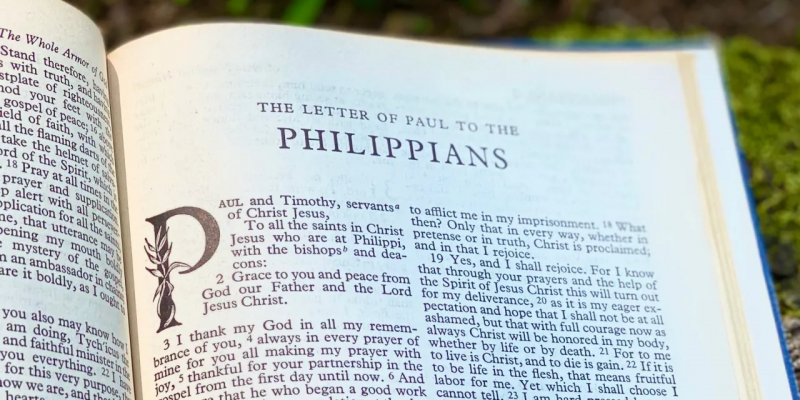Top 5 St. Paul’s Contributions to the New Testament
St. Paul was not one of the original 12 Apostles of Jesus. However, out of all the Apostles, he was the most prolific contributor to the New Testament. Read on ... read more...this list to learn three of his biggest contributions to the New Testament.
-
The sixth book of the New Testament, Letter of St. Paul to the Romans (also known as Epistle of St. Paul the Apostle to the Romans; abbreviation Romans), is the longest and doctrinally the most significant of St. Paul the Apostle's writings. It was most likely written at Corinth in 57 CE. The epistle was written to the Roman Christian church, whose members Paul intended to meet for the first time while traveling to Spain. The letter has been intensely studied since early Christian times and was the basis of Martin Luther’s teaching on justification by faith alone.
In the letter, Paul declares that God’s righteousness has always been manifest in his dealings with humanity. The Apostle acknowledges with pleasure the distinct religious heritage of the Jewish people, but he emphasizes that even for Jews, righteousness no longer depends on whether they following the Mosaic Law or not. The reason for this is that God now manifests his righteousness through Christ, whose righteousness is the foundation of all human righteousness. Paul warns his readers, nonetheless, that being righteous does not give one permission to sin. The letter also includes a number of particular exhortations, such as to love and support one another, to obey civic authorities, and to be obedient to civil rulers.

Photo: Exegetical Tools 
Photo: International Mission Board -
the ninth book of the New Testament, Letter of Paul to the Galatians (also called Epistle of St. Paul the Apostle to the Galatians, abbreviation Galatians) was written by St. Paul. The letter is believed to be written to the Christian churches that were disturbed by a Judaizing faction. Although the exact date of composition is unknown, Paul most likely wrote the epistle from Ephesus to a church he had formed in Galatia, Asia Minor, during the years 53 and 54. The letter addresses the issues at hand in a direct and forceful manner. It is also the only epistle that ends without kindly ingress, thanksgiving, or personal greetings appended to the final blessings.
Paul's statements to the contrary were repudiated by the Judaizing members. They deny the legitimacy of his apostolic calling. In response, Paul vigorously asserted his credentials as a genuine apostle of Jesus Christ and in the process provided significant autobiographical information. In the letter, Paul reiterates his prior teaching that the Mosaic Law is no longer applicable and that, as a result, a return to Jewish customs would be regressive. Despite their newfound freedom, Christians nevertheless have a moral obligation to live in accordance with the Spirit of God, and they are not given a pass to sin.

Photo: The Bridge Church Video: Diocese of Lansing -
The eleventh book of the New Testament, Letter of Paul to the Philippians (also called Epistle of St. Paul the Apostle to the Philippians, abbreviation Philippians) is the next contribution of St. Paul to the New Testament. This letter was written by Paul in 62 CE to the Christian congregation he had established in Philippi and is believed to be written while he was in prison in Rome or Ephesus.
Being in prison while writing the letter to the Philippians, St. Paul explains that while he welcomes death for the love of Jesus, he is still concerned to continue his apostolate. Therefore, he was afraid that his execution was imminent and that he would not be able to return to the Philippians. In his letter, Paul urges his readers to imitate Christ's humility, who "emptied himself" and "became obedient unto death, even death on a cross," and to hold firm to their faith. This frequently referenced verse is thought by exegetes to have been taken from an early Christian hymn. Paul also exhorts the Philippians to "work out their own salvation with fear and trembling" (2:12), a phrase frequently used by theologians to describe the importance of free choice in achieving one's own salvation.

Photo: Seeking Scripture Video: St James's Church Sussex Gardens -
The epistle is the 18th book of the New Testament canon, Letter of Paul to Philemon is also called the Epistle of St. Paul the Apostle to Philemon, abbreviation Philemon, brief New Testament letter. The letter is thought to be composed by St. Paul in the ancient Roman province of Asia (now in western Turkey). It is believed to be written on behalf of Onesimus, who was enslaved to Philemon and may have run away, to a wealthy Christian of Colossae. This letter is now generally regarded as one of the undisputed works of Paul. It is the shortest of Paul's extant letters, consisting of only 335 words in the Greek text.
This is another letter that paul wrote when he was imprisoned. it is thought to be composed around AD 57-62 while Paul was in prison at Caesarea Maritima (early date) or more likely from Rome (later date) in conjunction with the composition of Colossians. In this letter, Even though Onesimus may have a history of transgressions, Paul professes his affection for the recently converted Onesimus and begs Philemon to treat him with the same kindness that Paul would. Paul exhorts Philemon to manifest true Christian love, which means breaking down boundaries between enslaved people and free people, without pronouncing judgment on slavery itself.

Photo: 1517 
Paul writing the Letter to Philemon - Britannica -
The 19th book of the New Testament canon, Letter to the Hebrews, also called Epistle to the Hebrews, abbreviation Hebrews, anonymous New Testament letter, is traditionally attributed to St. Paul. The letter was written somewhere in the second part of the first century. It was meant for a Christian community whose faith was waning as a result of heavy Jewish influences, based on its contents.
The letter describes Christ's perfect priesthood in order to strengthen the Christian faith. This was in contrast with the office of the Jewish high priest. The letter goes on to say that because of this, Christianity is superior to Judaism. Through the letter, the “fearful prospect of judgment” that awaits "those who have repudiated the Son of God" and the danger of apostasy are warned to Christians. They are exhorted to persevere in their faith by following the heroic example of others well known to them.
However, this letter is now believed to be the work of another Jewish Christian, and that might have been St. Barnabas or perhaps one of Paul’s other associates or later disciples. This is because the emphasis on Christ’s priestly mediation and statements on faith and the Mosaic Law, which were mentioned in this letter, is not typical of Paul's writings.

Photo: Lexham Press Video: Mike Licona


























